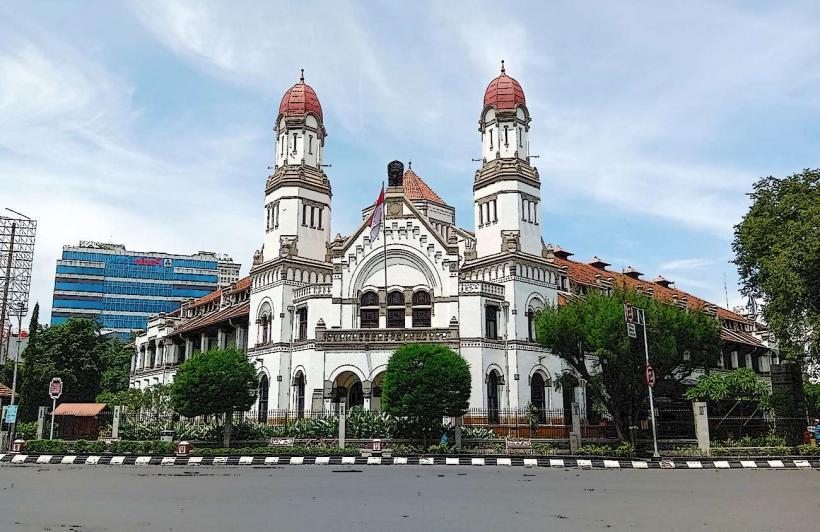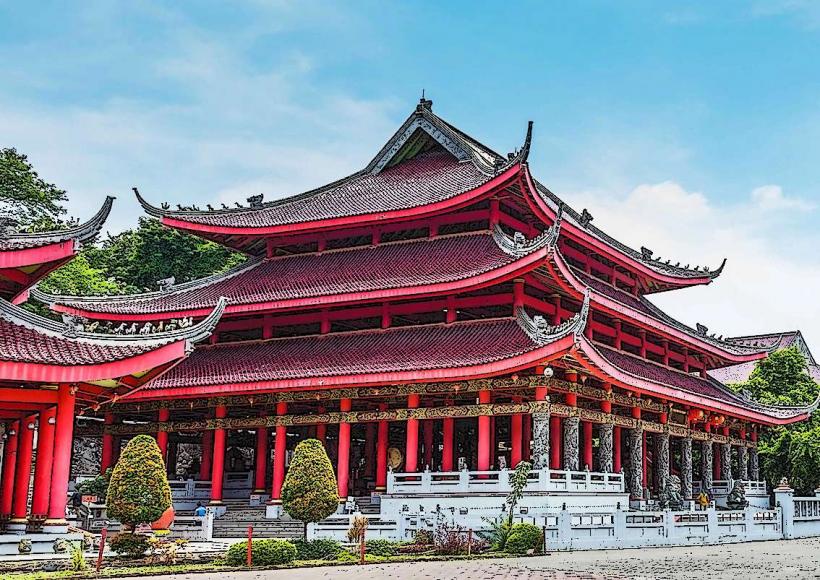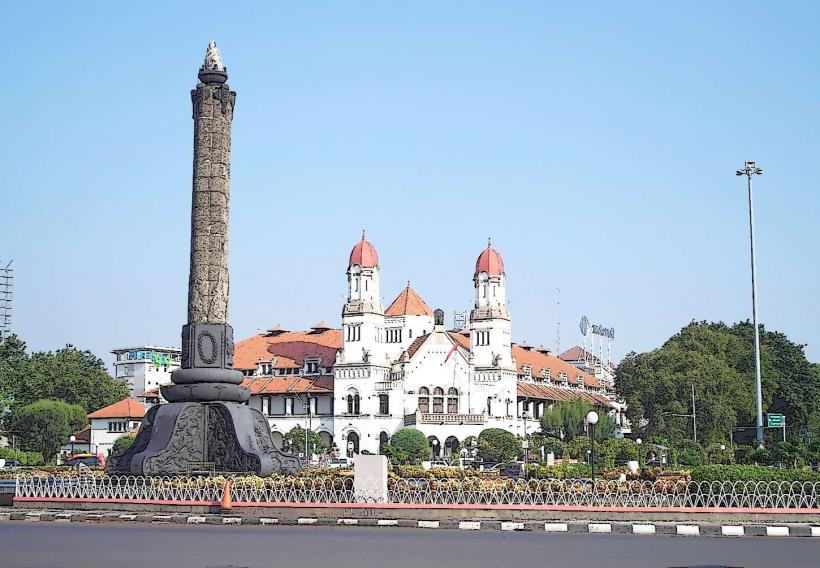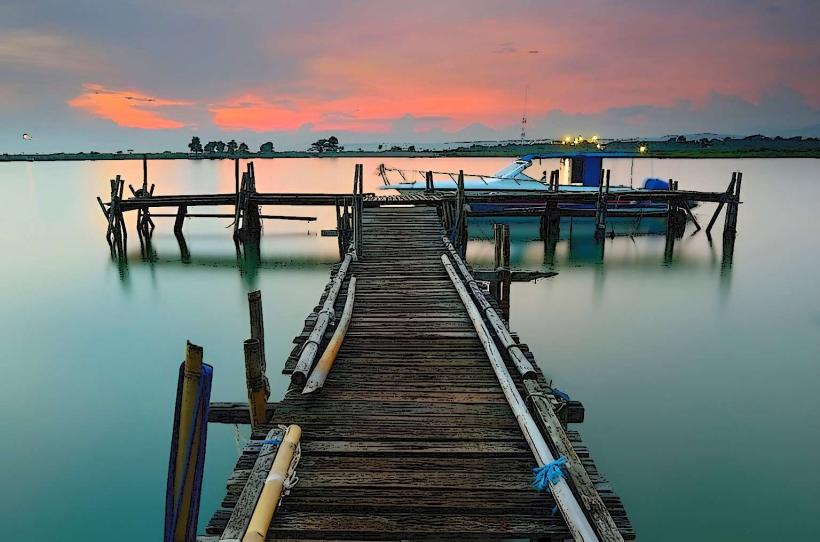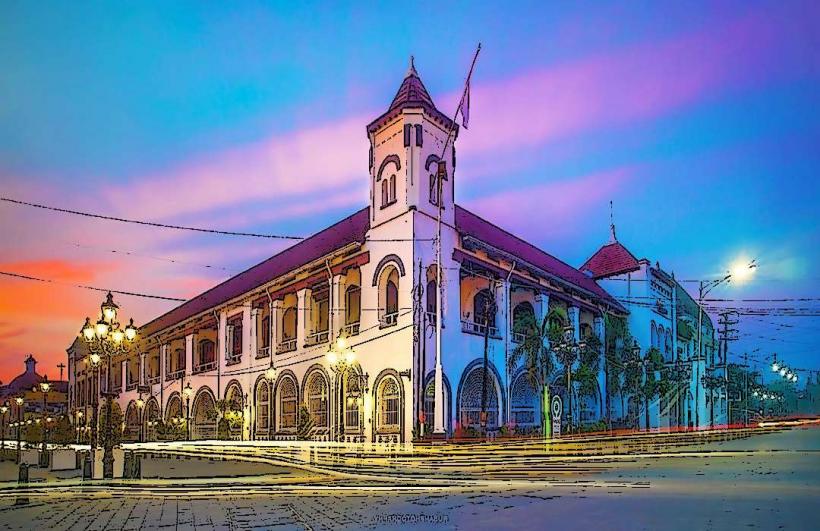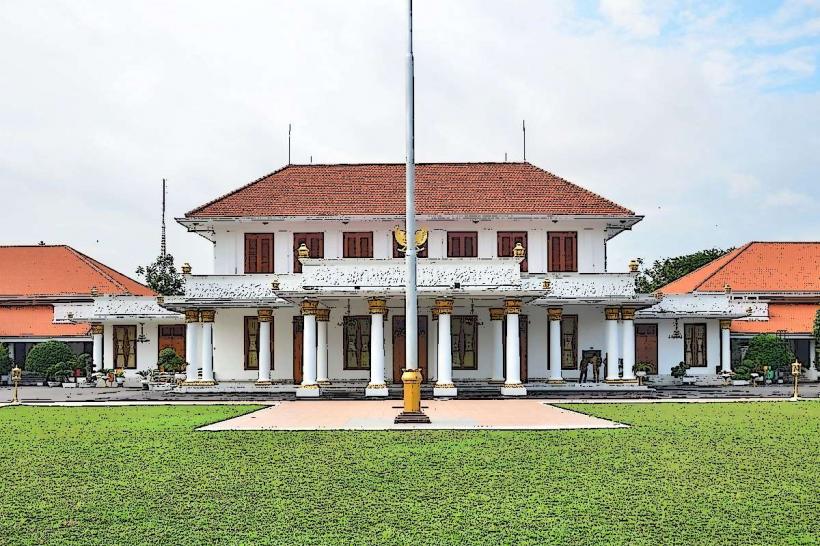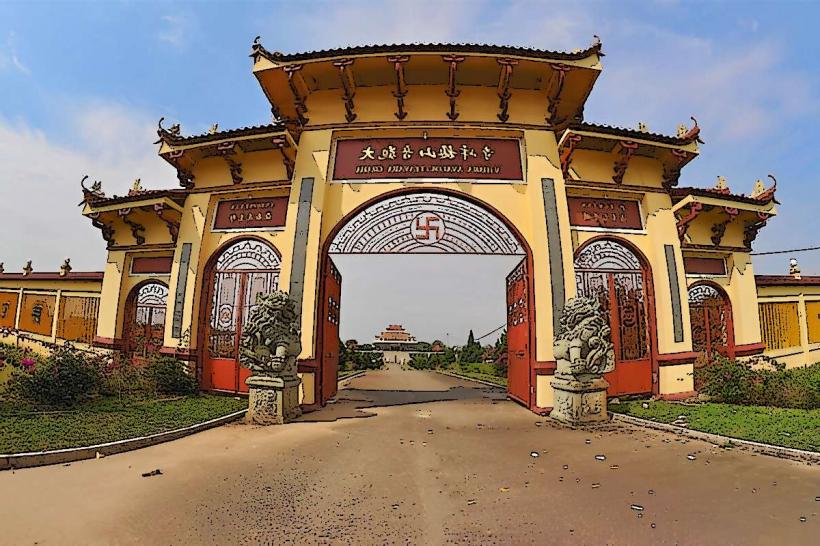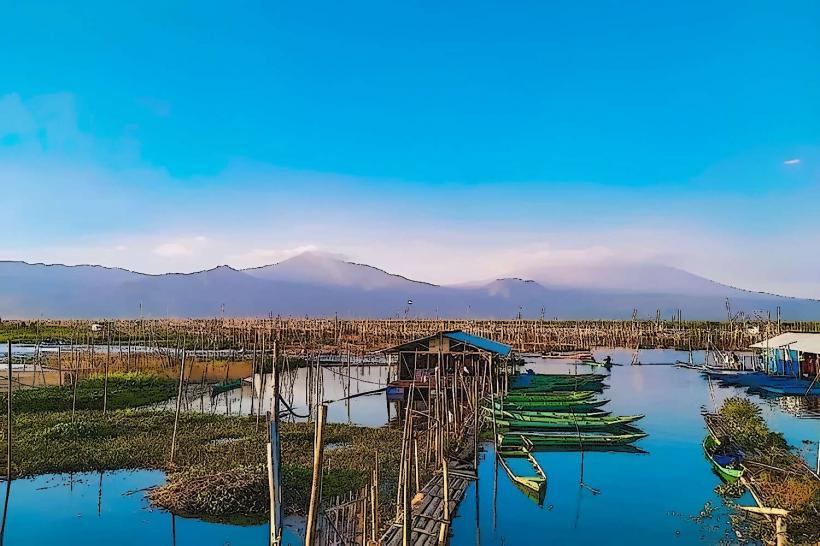Information
Landmark: Great Mosque of Central JavaCity: Semarang
Country: Indonesia
Continent: Asia
Great Mosque of Central Java (Masjid Agung Jawa Tengah)
The Great Mosque of Central Java (Masjid Agung Jawa Tengah), located in Semarang, is one of Indonesia's largest and most magnificent mosques. Combining traditional Javanese, Islamic, and modern architectural styles, the mosque is a significant religious and cultural landmark in the region. It is a place of worship, as well as an architectural masterpiece that attracts both locals and tourists.
Key Highlights of the Great Mosque of Central Java
1. Historical Background
Construction and Completion:
- The mosque was constructed from 2001 to 2006, with the aim of providing a central place for worship and promoting Islamic culture in Central Java.
- It was officially opened to the public in 2006, becoming a vital center for Islamic activities in the region.
Architectural Vision:
- The mosque was designed by architect H. Ridwan Kamil, who incorporated various architectural styles, including Javanese, Ottoman, and Islamic designs.
Significance:
- As the largest mosque in Central Java, the Great Mosque serves as a symbol of the Islamic faith and cultural diversity in the region.
2. Architectural Features
Size and Layout:
- The mosque complex covers an area of 10 hectares and features a vast prayer hall that can accommodate up to 15,000 worshippers.
- The mosque is equipped with modern facilities, including a library, lecture halls, and community spaces for educational and religious activities.
Dome:
- The mosque features an enormous dome with a diameter of 20 meters. The dome’s design is inspired by Ottoman-style architecture and is one of the most prominent features of the mosque.
Minaret:
- The mosque’s minaret stands at a towering height of 99 meters, symbolizing the 99 names of Allah in Islamic tradition. Visitors can ascend the minaret to enjoy a panoramic view of Semarang city.
Design Elements:
- The prayer hall is designed in a traditional Javanese style with open spaces, large windows, and intricate carvings, ensuring proper ventilation and lighting.
- Arabic calligraphy and Islamic geometric patterns are visible throughout the mosque, adding a spiritual and artistic touch.
- The mosque also features a reflecting pool in front of the entrance, creating a serene atmosphere.
Courtyard:
- A vast open courtyard surrounds the mosque, offering a peaceful place for reflection and contemplation. The courtyard is beautifully landscaped with lush greenery, adding to the mosque's tranquility.
3. Religious and Cultural Significance
Religious Center:
- The mosque serves as the primary place of worship for Muslims in Semarang and the surrounding areas, offering five daily prayers and Friday prayers (Jumu’ah).
- It hosts various religious events, such as Ramadan prayers, Eid al-Fitr celebrations, and Islamic lectures.
Cultural Events:
- The mosque also hosts cultural and educational activities, such as Islamic music performances, traditional Javanese arts, and lectures on Islamic history and culture.
Symbol of Unity:
- As an iconic structure, the mosque reflects Islamic unity, blending diverse architectural influences while staying true to local Javanese culture.
- It stands as a place of unity for the Muslim community, serving as a center for worship, learning, and community engagement.
4. Visitor Experience
a. Minaret Observation Deck:
- Visitors can climb to the observation deck of the minaret, offering stunning panoramic views of Semarang and its surroundings.
- The experience of standing at the top of the minaret is particularly popular for photography enthusiasts.
b. Prayers and Worship:
- Visitors are welcome to participate in Friday prayers (Jumu’ah) or other daily prayers. However, modest dress and respectful behavior are required when entering the mosque.
- Non-Muslim visitors are allowed to visit outside prayer times to appreciate the mosque’s architectural beauty and historical significance.
c. Guided Tours:
- Guided tours are available, offering visitors an opportunity to learn about the mosque’s architecture, history, and cultural significance. The guides also explain the design elements and Islamic teachings.
d. Educational and Cultural Events:
- The mosque regularly hosts cultural performances, Islamic lectures, and educational programs, allowing visitors to immerse themselves in Islamic culture.
5. Annual Events and Festivals
Ramadan and Eid Celebrations:
- During Ramadan, the mosque becomes a hub for special prayers, community meals (iftar), and religious gatherings.
- The mosque is particularly vibrant during Eid al-Fitr and Eid al-Adha, with thousands of worshippers coming to celebrate these significant Islamic holidays.
Islamic Cultural Festival:
- The mosque organizes the Islamic Cultural Festival, a celebration of Islamic art, music, and culture. This event attracts visitors from various regions.
6. Practical Information
- Location:
- Jl. Gajah Raya, Tawangsari, Semarang, Central Java, Indonesia.
- Opening Hours:
- Open daily from 5:00 AM to 10:00 PM, except during prayer times.
- Non-prayer time visits are allowed, but visitors should dress modestly and respectfully.
- Entrance Fee:
- Free admission for all visitors, though donations for maintenance are welcomed.
- Best Time to Visit:
- Early morning or late afternoon for a peaceful experience and to avoid the crowds.
- Visit during the Eid celebrations for a vibrant cultural experience.
7. Nearby Attractions
- Lawang Sewu: A historical Dutch colonial building and a prominent landmark in Semarang.
- Sam Poo Kong Temple: A sacred site honoring Admiral Zheng He with a blend of Chinese and Javanese architecture.
- Tugu Muda Monument: A historic landmark commemorating Indonesia’s independence struggle.
- Blenduk Church: A historic Protestant church with a unique dome and colonial architecture.
8. Tips for Visitors
Dress Modestly:
- Visitors should wear appropriate, modest clothing (covering arms and legs) when entering the mosque. It is customary for women to cover their heads with a scarf or hijab.
Respect Local Customs:
- Maintain a respectful tone and behavior, especially during prayer times or when visiting the sacred areas of the mosque.
Photography:
- Photography is allowed in most areas but avoid taking photos during prayers or in the prayer hall out of respect for worshippers.
Guided Tours:
- Consider joining a guided tour to enhance your understanding of the mosque’s history and architectural design.
9. Conclusion
The Great Mosque of Central Java is an architectural gem, an important religious site, and a cultural center. Its stunning blend of architectural styles, large size, and significant role in the local Muslim community make it a must-visit landmark in Semarang. Whether you're interested in its grand design, spiritual atmosphere, or cultural significance, the mosque offers a unique and enriching experience for visitors.

